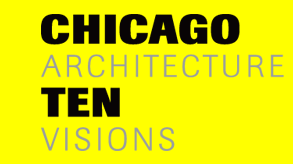 |
 |
|
|
|
|
XAVIER VENDRELL
Xavier Vendrell studied architecture in his native city of Barcelona, where he later combined practicing architecture along with teaching at the university level at the Escuela Tecnica Superior de Arquitectura de Barcelona. Vendrell’s works and projects have been published in magazines and books, and presented in several exhibitions internationally. In 1986, he became cofounder of A30 Edicions d’Arquitectura, an innovative publication devoted to contemporary architectural thought. Vendrell’s work includes landscape architecture, urban design, public buildings, housing, and interior design. His office was involved in several projects for the 1992 Barcelona Olympic Games, including the winning competition entry for the Poblenou Park in the Olympic Village of Barcelona. Vendrell first came to the United States in 1994 to serve as a visiting professor at Washington University School of Architecture in St. Louis, Missouri. At the invitation of the University of Illinois, he moved to Chicago in 1997 and is currently professor of architecture at the University of Illinois at Chicago’s School of Architecture. He is also the founder of the Xavier Vendrell Studio.
|
 |
Reading between Streets
This installation explores two kinds of cities that coexist in Chicago. One is a city of relationships, made up of cultural and social spaces. This part of the city is characterized by cohabitation, mixture, opportunities, and diversity. Moving through this part of the installation, viewers invent and engage in relationships and define the identity and meaning of the city. The other city does not need inhabitants. It is simply a container; new elements do not create new relationships. It is a city full of newly constructed, undesigned places and the erosion of preexisting space. This part of the installation transforms the viewers into strangers within their own city.
Architect’s statement
Two kinds of cities currently coexist in Chicago. One city is a city of relationships, made up of shared cultural and social spaces and characterized by cohabitation, mixture, opportunities, density, diversity, and plurality. This city is a place where experiences and activities occur simultaneously. It is a place that a small child can walk through, shaping future dreams as part of a constellation of possibility and ambiguity. Visitors, moving through this part of the installation, become inhabitants of the city. They invent and engage in relationships and participate in the definition, identity, and meaning of the city. This city—this room—cannot exist without its inhabitants.
In contrast, the other city does not need inhabitants. It has no identity; it is simply a container. Here, new elements do not create new relationships or cultures. It is a city full of non-places resulting from newly constructed, undesigned places or the erosion of the preexisting urban fabric. This part of the installation is an alienating and disorientating space, transforming the visitors into strangers within their own city.
|
|
 |
|
|
